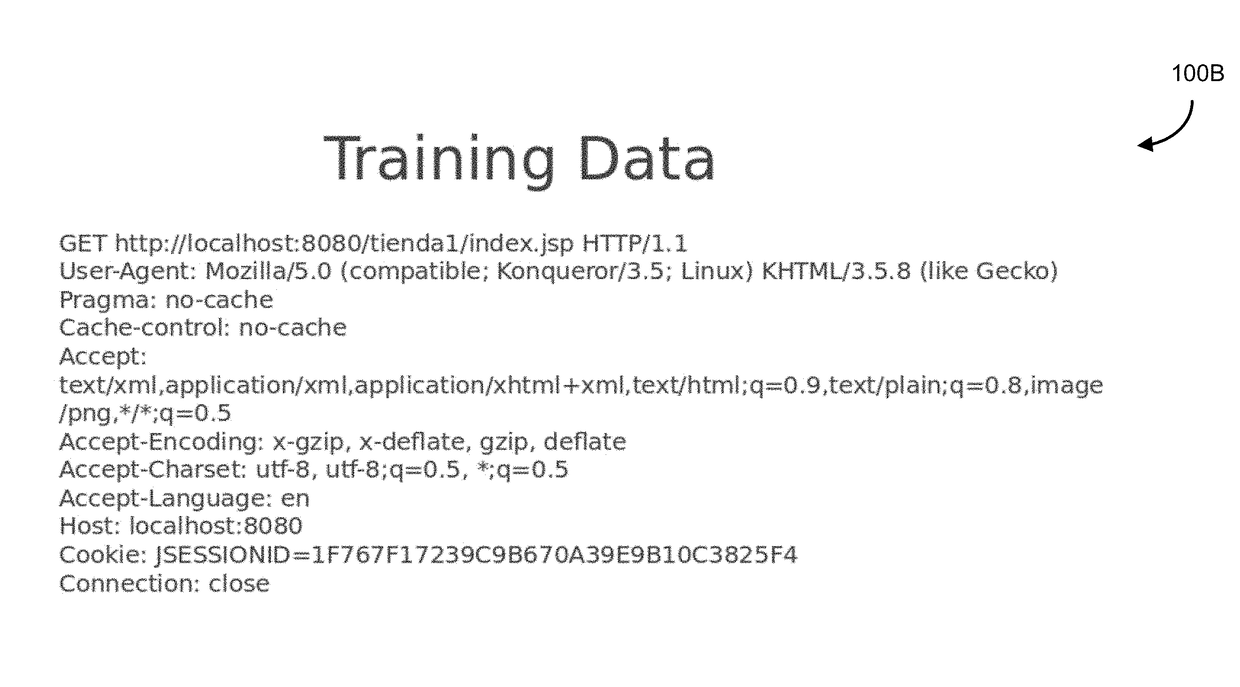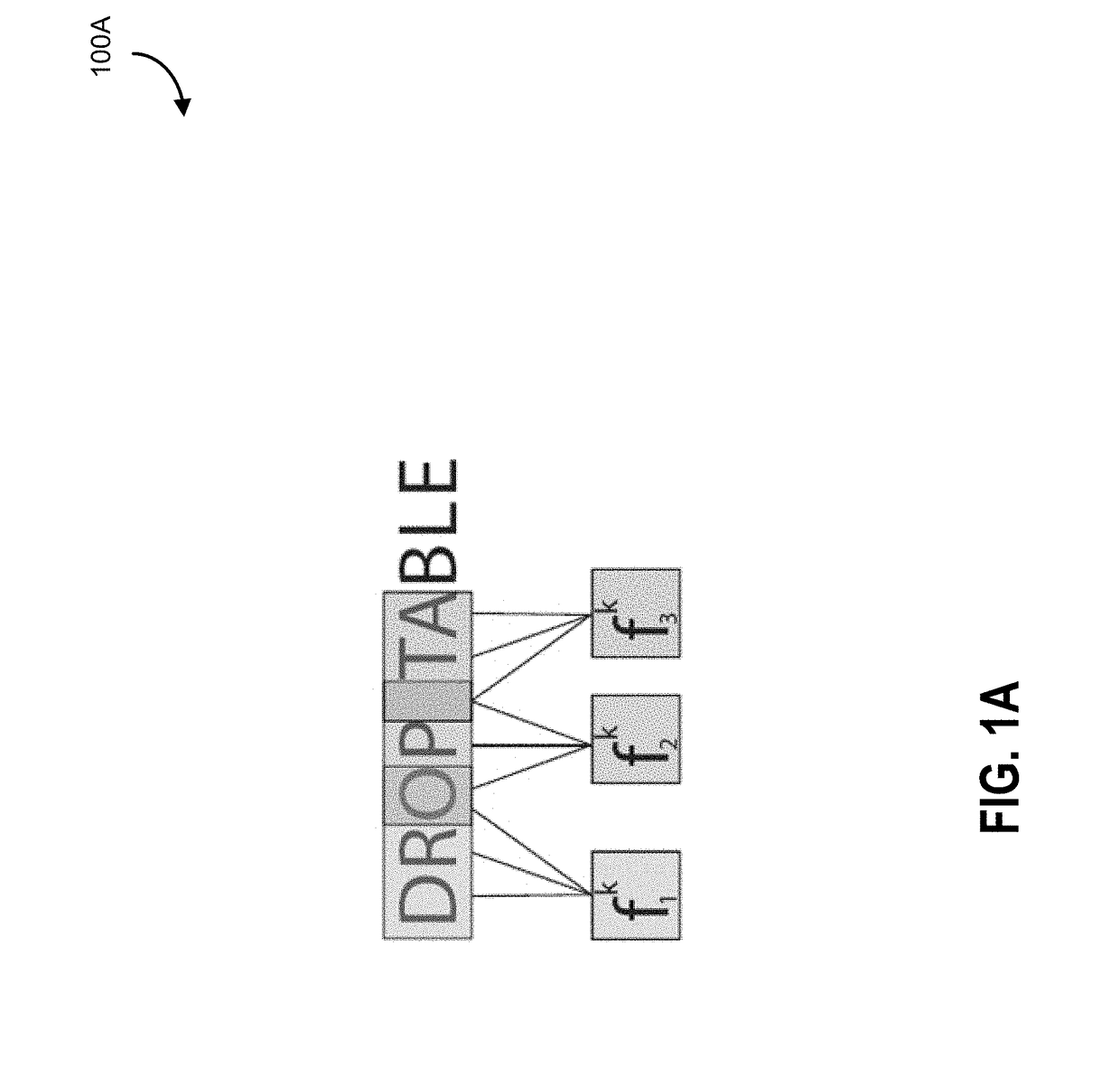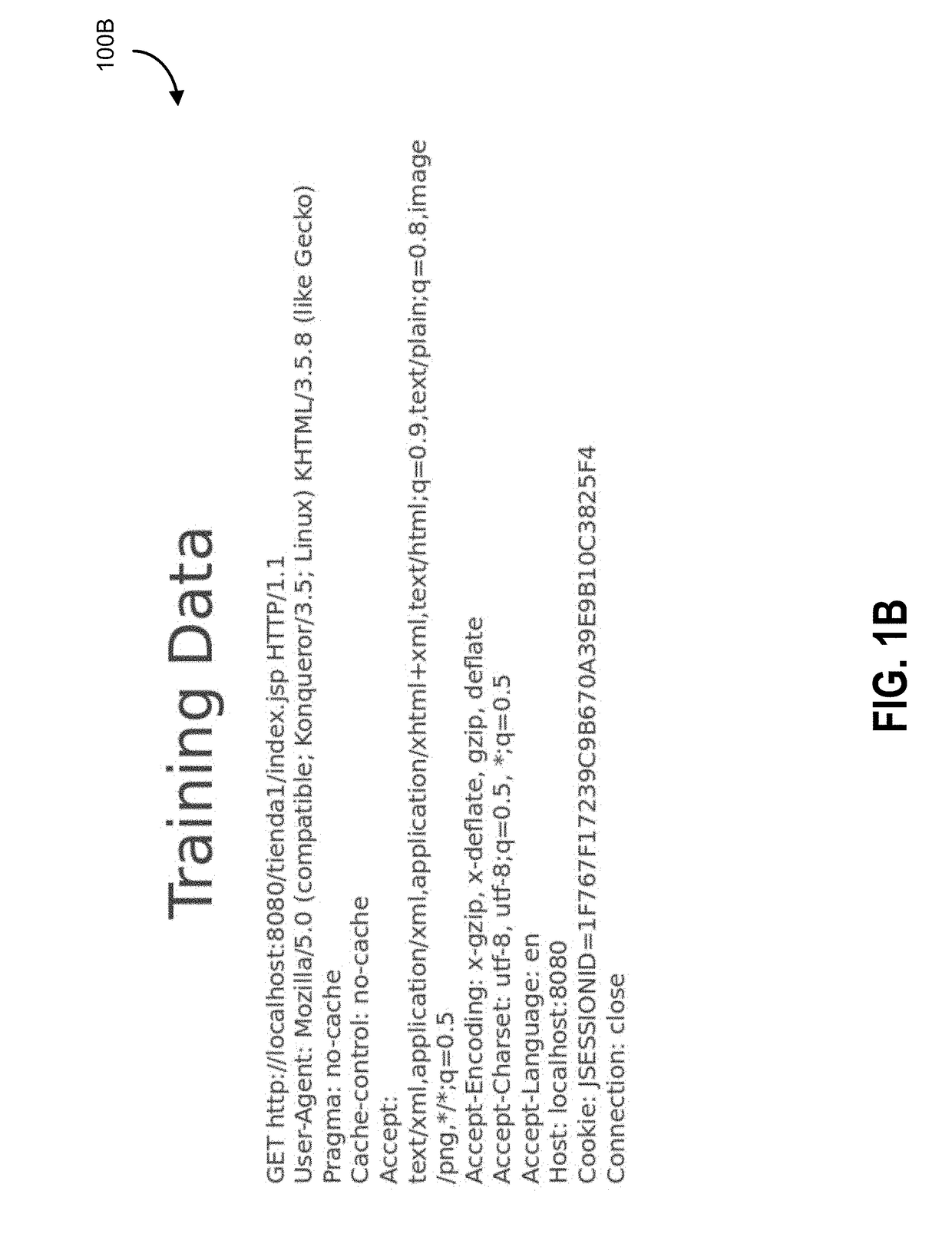Systems and methods for malicious code detection
a malicious code and detection system technology, applied in the cyber security field, can solve the problems of increasing the difficulty of cybersecurity, increasing customer churn, and increasing financial losses, and achieve the effect of reducing the size of the data being analysed
- Summary
- Abstract
- Description
- Claims
- Application Information
AI Technical Summary
Benefits of technology
Problems solved by technology
Method used
Image
Examples
example implementation
[0112]A multi-step machine learning neural network structure may be provided, as shown in in some embodiments on FIG. 3A and FIG. 3B. Rather than a heuristic / rule-based approach to malicious code detection, Applicants has built a neural network that can detect new attacks that, in some embodiments, would not be caught or would have less likelihood of being caught by a traditional approach without modifying a detection rule.
[0113]Referring to FIG. 3A, an illustration 300A of the full model for the malicious code neural network is shown, whereby a SQL injection (a) is read into a convolutional layer (b) which picks up patterns in the text. These features are then regularized via batch normalization and dropout (c). Next they pass through the recurrent layer (d), which remembers the sequence of patterns, and generates new features. Finally these features are passed through the classification layer (e) which labels the SQLi as malicious.
[0114]In FIG. 3B, a flow chart 300B showing exampl...
implementation example and experimental
Results—2
[0169]A second implementation was conducted on a second example neural network, trained on a laptop with a 2.6 Ghz quad-core intel i7 processor, 16 GB of memory and a GeForce GTX 1060. The code was implemented in Keras [with a GPU-enabled Ten sorflow framework. For the model selected below, each training epoch took approximately 100 seconds to run, with 10 epochs run in total.
[0170]The final model selected was an optimal balance of depth, capacity and generalizability. After encoding the text to one-hot vectors, the data was fed into the first of three convolutional layers. Each convolutional layer had a receptive field d=7. This value was sufficiently large for most words, while not so large that any signal could be lost within the receptive field. Each CNN had 16 filters in total. The first CNN layer had a stride step of s=1, while the second and third had a stride step of s=2. This effectively quartered the sequence length by the time it had reached the RNN.
[0171]After e...
example code
[0218]Careful selection of parameters is an important factor. Factors for tuning, for example, include the number of layers to be implemented (e.g., the convolutional layers were used to reduce the sequence length and find patterns), whereby increased layers may help ease the computational burden, but too many layers would reduce the overall accuracy. The number of filters in the convolutional layers needs to be selected, as too few would cause the model to underfit, and further, too many would cause it to overfit, as both would lead to cause a drop in accuracy at test time.
[0219]The kernel_size is chosen so that it would encapsulate the majority of a word as it scanned across the text, and the activation type is chosen to help the network learn various types of parameters. In this example, reLu was chosen (e.g., over tanh). Batch normalization was chosen to help speed up training and improve test accuracy, and drop out was introduced to prevent overfitting. The value was carefully ...
PUM
 Login to View More
Login to View More Abstract
Description
Claims
Application Information
 Login to View More
Login to View More - R&D
- Intellectual Property
- Life Sciences
- Materials
- Tech Scout
- Unparalleled Data Quality
- Higher Quality Content
- 60% Fewer Hallucinations
Browse by: Latest US Patents, China's latest patents, Technical Efficacy Thesaurus, Application Domain, Technology Topic, Popular Technical Reports.
© 2025 PatSnap. All rights reserved.Legal|Privacy policy|Modern Slavery Act Transparency Statement|Sitemap|About US| Contact US: help@patsnap.com



